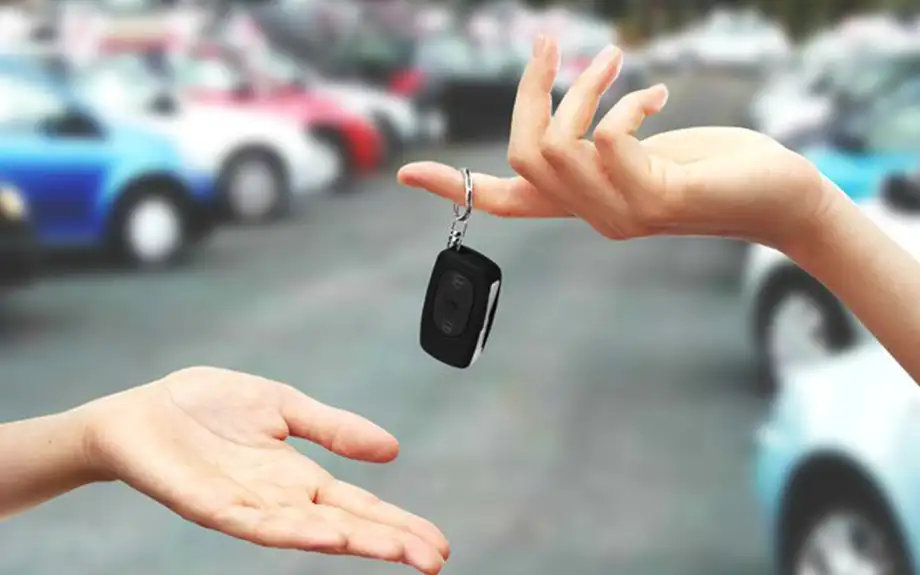16 Things to Look for When Buying a Used Car
Apr 4 2022 8:55AM
When buying your first car, it’s likely that you’ll be buying a used one. Not only are they cheaper in price, but if you were to have any minor bumps or scrapes, you may not feel as bad as if it was a pricier model. However, there are some risks to be aware of when it comes to buying a used car. We’ve shared some tips to help guide you through the purchase process.
1. Research the vehicle
If you already have your eye on a car, you can use a paid service such as the RAC or AA Vehicle check. It will give you a full history of the car before you leave the house, which could save you the hassle of a journey. The prices vary depending on the level of checks you want. By doing this, you could save yourself a trip.
2. Where to buy a used car
If you haven't decided on a car yet, knowing where to look is beneficial.
Buying a car privately can appear cheap, but something to be cautious about is the lack of warranty.
Auctions may seem like the cheapest option, but they pose similar risks to buying privately. With no warranty on either privately or auction bought cars, if there are any issues with the car in the future, you'll end up out of pocket from forking out for the repairs.
Car supermarkets offer good deals on mainstream cars, across various brands. They feature a good selection and reasonable prices, however, warranties are still not guaranteed.
Franchised dealers will most likely have the newest used cars. Although, because they are under more pressure to keep their cars to a certain standard, the price may not be as low as the other options.
All of the above are still viable options if you carry out the necessary checks on the car before you hand over the cash.
3. When to go to view a used car
It may seem obvious, but going to see the car during the day whilst the sun is out is the best time to go. It's important to view the car in clear light in order to spot any faults.
Additionally, experts claim that rain droplets often mask scratches and damage on the car's body. So it's best to wait for a dry day.
4. Bring a friend
It always helps to bring an extra pair of eyes when you’re thinking about buying a used car. Not only may they be able to spot anything that’s wrong with the vehicle, but they can stand outside of the car whilst you do things inside (rev the engine, turn on the lights).
5. Important documents to ask for
One of the most important things to check when buying a used car, is whether the person selling you the car has a V5C registration document. The DVLA advises that you shouldn’t buy a vehicle that doesn’t have one. This document is also handy to have whilst checking the car, since you can see if the features of the car match up to its history.
You will also need this document to inform the DVLA of the vehicle’s change in ownership, should you buy the car.
6. Matching registrations
It is a vital that the car’s vehicle identification number matches the one in the V5C document. As well as checking this, it’s worth seeing if the registration number is etched onto the cars windows or glass - if it is, does it match the current registration? If it doesn't, there's a problem.
Be cautious of any information that may look like it’s been tampered with (scratched out or covered with paint).
7. Keeping up appearances
Forget what your morals tell you for this one, you should definitely judge a book by its cover. Have a look at the exterior of the car, check for any bumps, dents or rust. Assess the paint job and watch out for uneven paint jobs. If it’s clear an area has been resprayed, don’t hesitate to ask why. Dodgy sellers have been known to cover up rust that way.
8. Locks and keys
Make sure the locks are in working order, and asking if there is a spare key for the vehicle, since it’s extremely difficult to change the locks afterwards.
9. How would I know if the mileage is correct?
There have been plenty of horror stories of dodgy car deals which involve the speedometer being tampered with to make it look like the car has done less miles.
To combat this, make sure the car’s history matches up to the number of miles on the speedometer.
On average, a normal driver will drive between 10,000 miles to 15,000 miles a year (depending on numerous factors). So, if the salesperson tells you that the car has been in use for the past 3 years, just do the math. If the number seems reasonable with the history, that’s a good thing!
10. Check the interiors
Checking the interior of the car is as important as checking the exterior. Take a look at the condition of the seats, steering wheel and gear knob. Does that correlate with how old the car is? Also, double check the functionality of the seatbelts.
Looking behind the mats in the foot well is another good place to check for any rust.
11. Check the electrics
Whilst you’re inside the car, test the electronics. Turn the radio on, test the air con and heaters. This is a good chance to press all the buttons to see if they work. This is also a good chance for the friend that you brought to help you assess any potential problems with the lights.
12. Test the engine
Don’t be afraid to ask to start up the engine. A good thing to do is have someone else rev the engine whilst you watch the exhaust. If there is too much dark smoke, the engine uses too much oil.
13. What should the tyres look like?
Have you ever wondered why people always kick the tyres when checking out the car? To be honest, we can’t give you an exact reason why, but we know what you should be looking for when assessing the tyres.
Are the tyres all evenly worn? If they aren’t, this may be due to bad alignment and this could be a safety issue.
Tread depth is also important for braking, so be sure to take a 20p piece with you. Place the 20p in the grooves of the tyre and if the outer band is visible, this poses a safety issue and should be checked immediately.
It’s also worth asking if there is a spare too.
14. Under the bonnet
To many, this part may seem daunting, but if you know how to check the basics, you should be okay.
Dip the oil, you should of learnt how to do this during your driving lessons. Low engine oil means that some parts of the engine aren’t lubricated enough, which may lead to problems in the future. If there’s too much oil there may be other liquids mixed in with it, which is causing the overflow. Perhaps enquire to why there is so much oil.
Check the expansion bottle (whilst the engine is cool) in the car has one, and check for any foreign substances in the bottle itself and the cap.
Bring yourself down to look below the front bumper beneath the engine. There shouldn’t be any oil or water dripping. It also doesn’t hurt to double check for any more rust.
15. Take it for a drive!
If you’ve run through all the steps above, it’s time to go for a test drive. This is obviously a fundamental part of deciding whether this car is for you. If you have the opportunity, drive on various kinds of roads and test all the features of the car. Be sure to test the braking, hand brake and listen out for any strange noises.
16. Negotiate
It’s not the end of the world if you have notice a dent or scrape. In fact, if you find any aesthetic issues with the car that don’t bother you too much, you could use it to negotiate a cheaper price.
It’s extremely likely that the sticker price on the car is considered a starting point for negotiation. Don’t be shy about trying to lower the price but you should make a smart and educated argument to why you want the price reduced. Don’t just go in, all guns blazing and start demanding lower prices for no reason.
When it comes to our first cars, it’s not unusual for Mum or Dad to take control of it. Not all of us are mechanics but knowing the basics is a terrific way to get to know your car. Knowing what to look for not only benefits you when buying a used car, but gives you the knowledge to foresee future problems. For anyone who will be buying their first car soon, we wish you the best of luck! Are you a learner who already owns their car? At InsureLearnerDriver, we can cover you! We offer various options to learner drivers, such as; temporary cover in a borrowed car and annual policies in your own car. Click here to find out more about learner driver insurance Click here to get a quick learner driver quote If you've already passed your test, we offer several products for young drivers, including our Black Box policy, which is the ultimate tool for young drivers looking to be safer on the roads and potentially reduce their insurance premiums. Click here to find out more about our policies for young drivers

